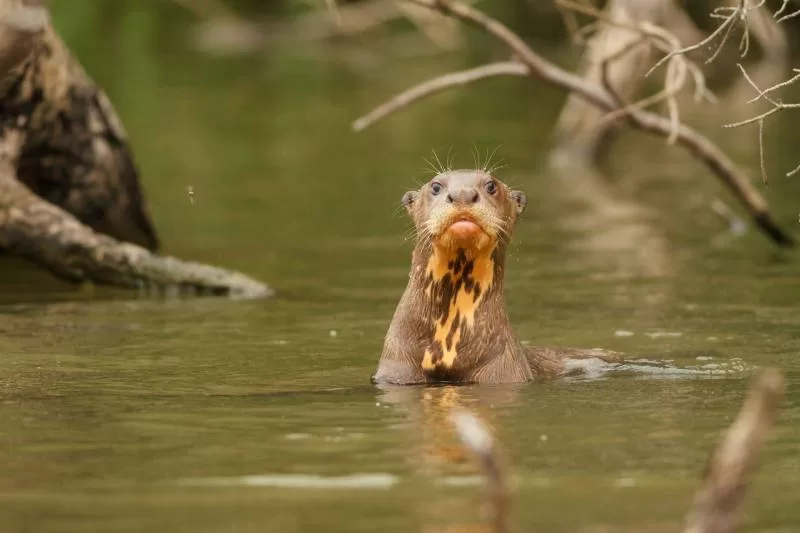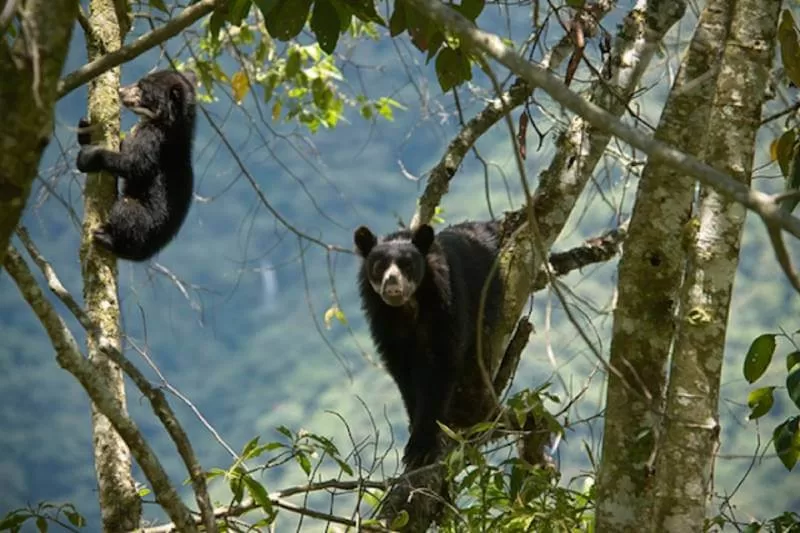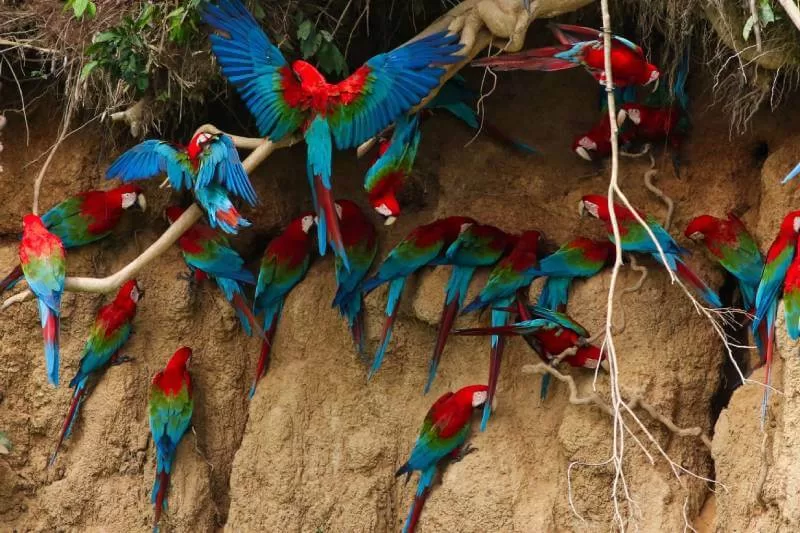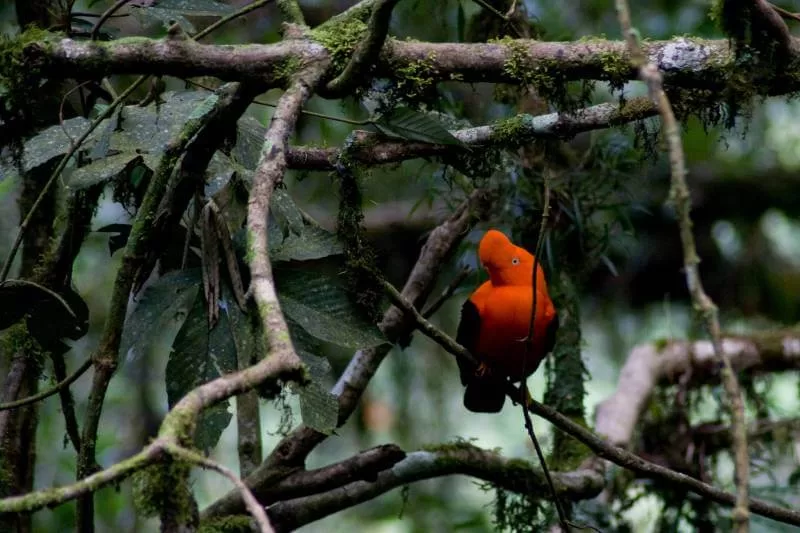Conservation is a hot topic nowadays. With a massive extinction upon us. The panorama may appear gloomy. But endangered species can recover. Many endangered species in Manu National Park have made remarkable recoveries.
This is thanks to conservation efforts, long term plans and more. With new challenges in conservation worldwide, we have to remain hopeful. And sometimes it is good to give us some victories.
Manu National Park is a nature reserve. It dedicates itself to conservation. The variety of plants and animals here is too wide. The park’s intention is to preserve these animals and plant species.
We aim to remind us that there is hope. To combat the extinction, we have to do continuous work. It is not easy. In particular, against a lot of causes.
Extinction is a complex problem. There is no simple answer about what to do.
However, for now we have to keep the work up. Tour operators, wildlife services, visitors and researchers. All of us play a role in these efforts. We want to keep the species of the Manu reserved zone thriving.

Manu National Park, near Puerto Maldonado city, is famous. Many people know it as a destination for nature enthusiasts. It is also one of the most important national parks in South America.
You’ll find a lot of ecosystems within the park. From lowland rainforests to cloud forests. This makes this place the perfect home of many animals. So, we’ll uncover the story of some endangered species In Manu National Park.
The objective is to remember the successes. These once endangered species in Manu National Park, have stable populations. They left behind the dreadful title.
The Giant Otter is a charismatic creature. They are one of the largest otter species in the world. Giant otters are important predators of Manu river.
But their population faced severe threats. Habitat destruction was a major concern. Also hunting lowered the population.
Conservation efforts in Manu aided their recovery. Wildlife services put in place strict protection measures. Other efforts focused on habitat restoration.
Scientific research at the Cocha Cashu Biological Station helped a lot. Today, the Giant Otter population is steadily increasing.
The Jaguar is one of the most elusive creatures in the Amazon basin. Monitoring its populations is already difficult. But its populations had a palpable downfall thanks to habitat loss. Illegal Poaching also contributed to the problem.
Jaguars were one of the endangered species in Manu National. They had a chance thanks to the park. Manu provided a sanctuary for Jaguars.
Jaguar got a place to grow their numbers. The Park also allowed a place to monitor their populations.
Conservationists focused on protecting large areas of forest. Anti-poaching patrols also helped. Researchers notice more jaguar sightings after a time. This was evidence of a healthier population of Jaguars.
At least in the reserve, they are not an endangered species in Manu National Park.
Armadillos in general are quite common. But as the biologist says “It depends on the species”. The Giant Armadillo was an endangered species in Manu National Park.
This elusive mammal is nocturnal. It was a victim of illegal hunters. And as many cases in this entry. It suffered from habitat destruction.
Conservation initiatives in Manu created a safer environment for them. In the Manu reserved zone they could be safe from hunters.
Efforts did not only focus on habitat protection. It required community engagement. Educating locals about the role of the Giant Armadillo was important. They were hunted in some cases because the locals saw them as a pest.
The population is reaching a stable number in the last few years. All efforts made in conservation see results in the long term. But the efforts have to be sustained long term, too.

In South America, the spectacled bear is the only bear you’ll find. They are also one really famous animals in Peru. These creatures were always timid. With a life that relies heavily on trees for food.
These bears became part of the endangered species in Manu National Park. To this day these bears face a lot of threats. But in Manu National Park you’ll find an established population.
Spectacled bears are victims of deforestation and hunting. Manu National Park offers a secure habitat for these bears. Also spectacled bears require a well developed forest to live. Manu allowed their populations to recover.
Habitat restoration was the key factor in the recovery of the population. Anti-poaching measures ensured the safety of individuals. Now, thanks to research, we understand that spectacled bears are vital for forest renovation. They are seed dispersers.
Sadly, there are a lot of avian endangered species in Manu National Park. But these are successful stories. This species includes some really iconic birds.
Manu National Park helped to provide grounds for scientific research. Manu is not a permanent home for many birds. Birds fly across an extensive territory. Manu is a safe place for them to nest and feed.
The Harpy Eagle sadly was part of the endangered species in Manu national Park. This is a powerful predator. Its short wingspan allows it to maneuver even in forest areas. This is an impressive animal.
Habitat destruction severely impacted its population. Also hunting was a big problem. Conservation efforts in Manu helped in their recovery. Protection of large forest areas was necessary.
These ensure an ample hunting ground for the eagles. Researchers at the Cocha Cashu Biological Station monitor their nests. They track the eagles’ breeding success.
Their population is now slowly increasing. In the next few years, maybe they won’t be part of the endangered species in Manu National Park.
The Andean Cock-of-the-Rock is the national bird of Peru. But deforestation made them part of the endangered species in Manu National Park. There were great efforts to save the cock.
The cock of the rock lives in the cloud forest. In the high Manu reserved zone. And the main problem it faces was habitat loss. What brought the Cock-of-the-rock back was the preservation of its habitat.
The area that became of interest was the leks. The areas where males perform their mating dances. With the area more protected these birds breed successfully.
The red-bellied macaw and the blue-headed macaw are iconic macaw species. They are beautiful. They play a role in seed dispersion. And they also help with pollination and plant control.
And as every animal on this blog, they were an endangered species in manu national Park. The main reason: Habitat destruction and the pet trade. These birds were poached to sell them as pets. Also some illegal activities destroyed their homes.
Manu National Park’s protected areas have become a sanctuary for them. In the reserved area of the park, they have a home. There they thrive.
Conservation programs focused on protecting their nesting sites. So they have the opportunity to repopulate. Increased enforcement against poaching has also been crucial. And captive breeding legal programs for macaws also had a part in reducing poaching.
Their population is now gradually increasing. It also required a little effort in education to secure the macaw population. Nowadays you can find macaws along the Madre de Dios River.

Manu National Park is a sanctuary. Despite the Many endangered species in Manu National Park. The reserve has secured many plant and animal species.
The measures the park implements help conservation and scientific research. And also it gives a zone of authority to Wildlife services. Here we’ll see some of the measures that helped the endangered species in Manu National Park.
Manu National Park focuses on protecting habitats. In the park there is space for habitats to exist uninterrupted. This includes vast tracts of lowland rainforest and cloud forest.
By preserving these areas, the park ensures a home for countless species. Conservationists monitor habitats to prevent illegal activities. In a monitored area this is easier. Many endangered species in Manu national park, get to find a habitat.
Poaching poses a significant threat to wildlife. I not only harm some animals. But it takes away possible mates for other animals. And cubs are in more danger.
Poachers take more animals than they could sell. Because they know, just in transport, many of the animals won’t make it.
Manu National Park has implemented anti-poaching measures. Rangers patrol the park regularly. In recent years, programs have introduced advanced technology. With this rangers can track and prevent illegal activities.
These efforts have significantly reduced poaching incidents. The objective is to protect the endangered species in Manu national Park.
Scientific research is vital for conservation. The Cocha Cashu Biological Station conducts extensive research on endangered species in Manu National Park. Only with knowledge, researchers can create effective measures.
Academics study the behavior, population, and habitat of various species. This information helps formulate effective conservation strategies. The research-driven approach has proven its effectiveness.
Rehabilitation and breeding programs are essential for certain species. Manu National Park has set up facilities to care for injured or orphaned animals.
Breeding programs for species have been successful. These programs increase population numbers. It also improves genetic diversity. So the endangered species in Manu National Park can thrive.

If you got any questions, please do not hesitate to send us a message. We reply within 24 hours!
+51 900 394 399
info@biomanuexpeditions.com
reservas@biomanuexpeditions.com
